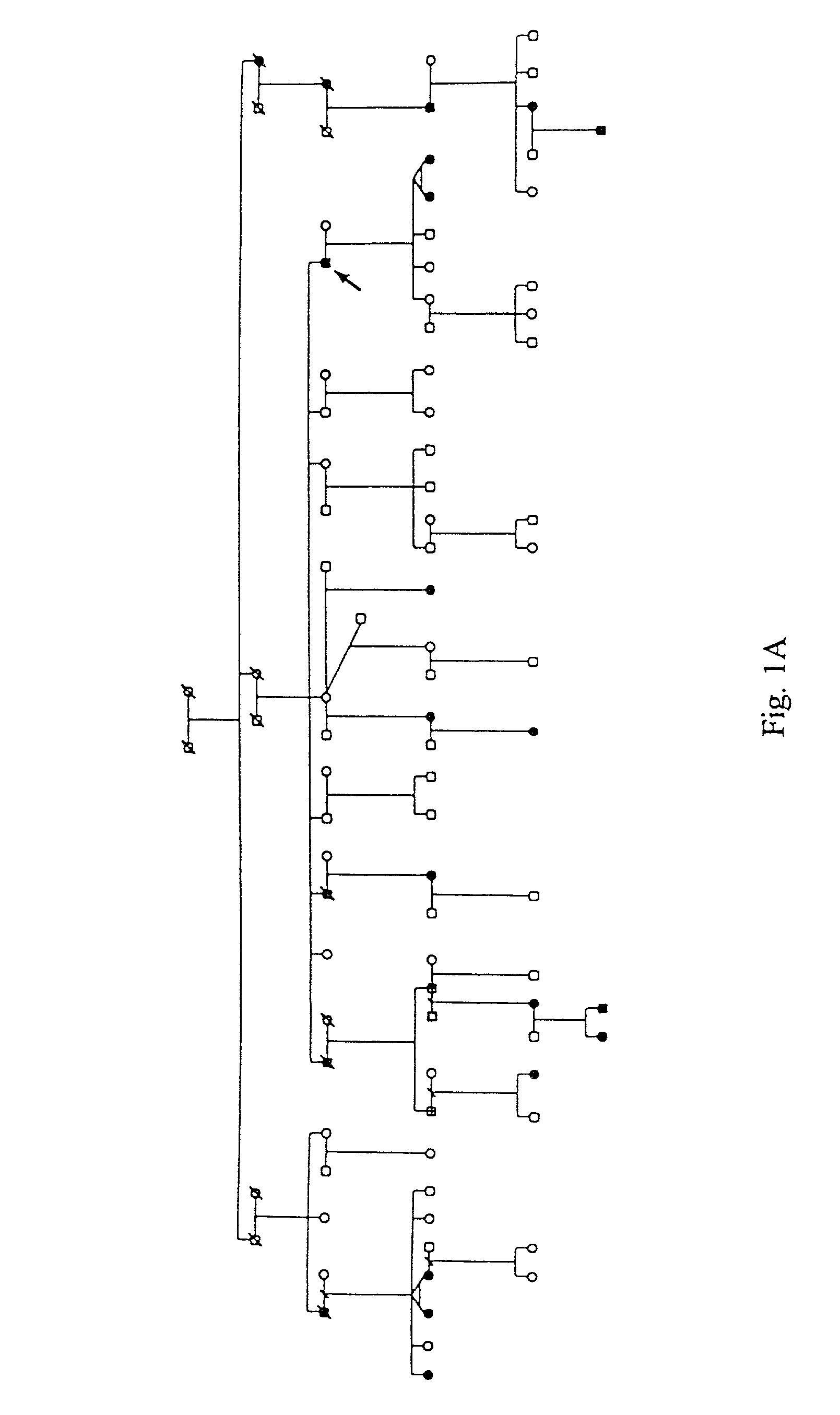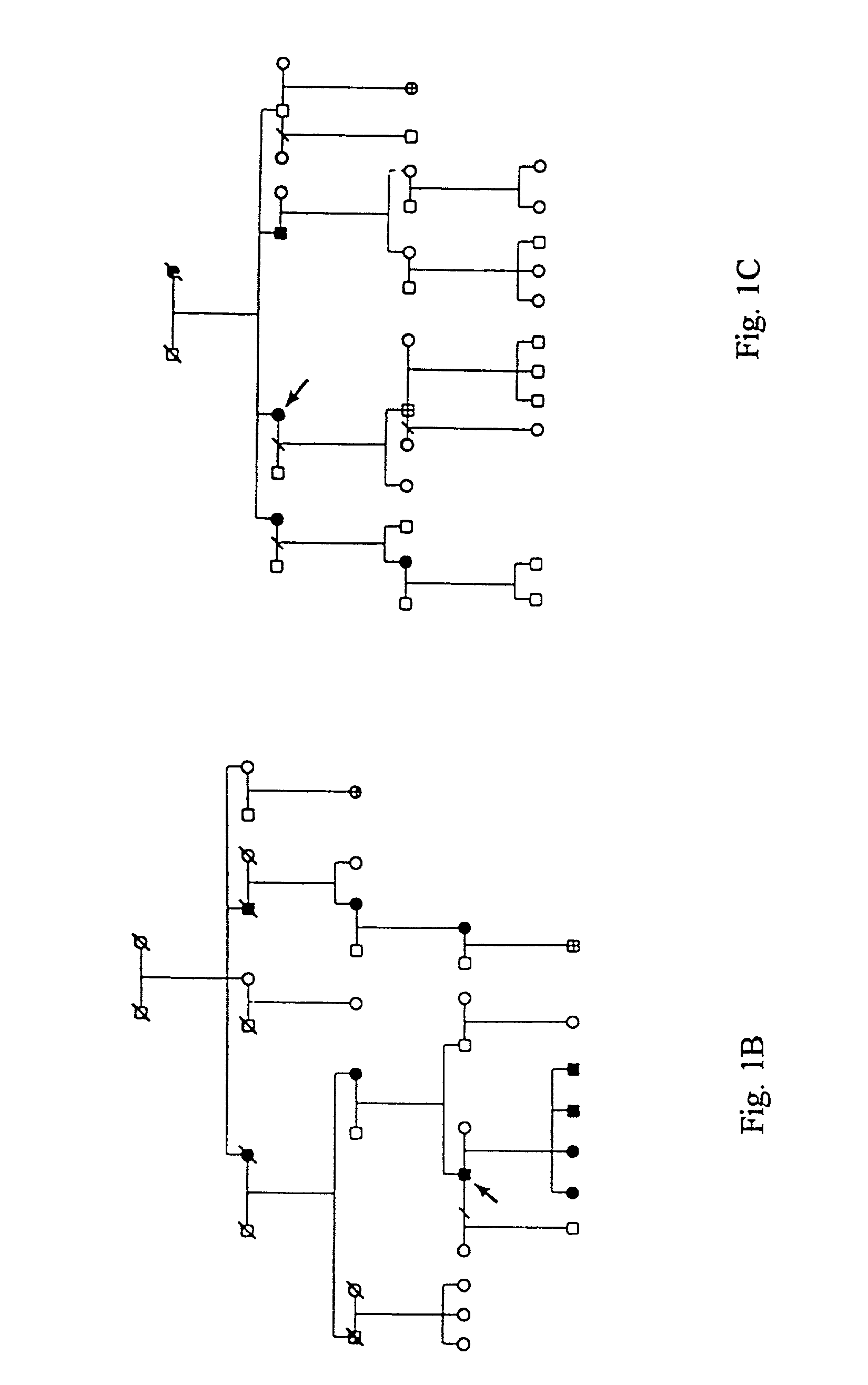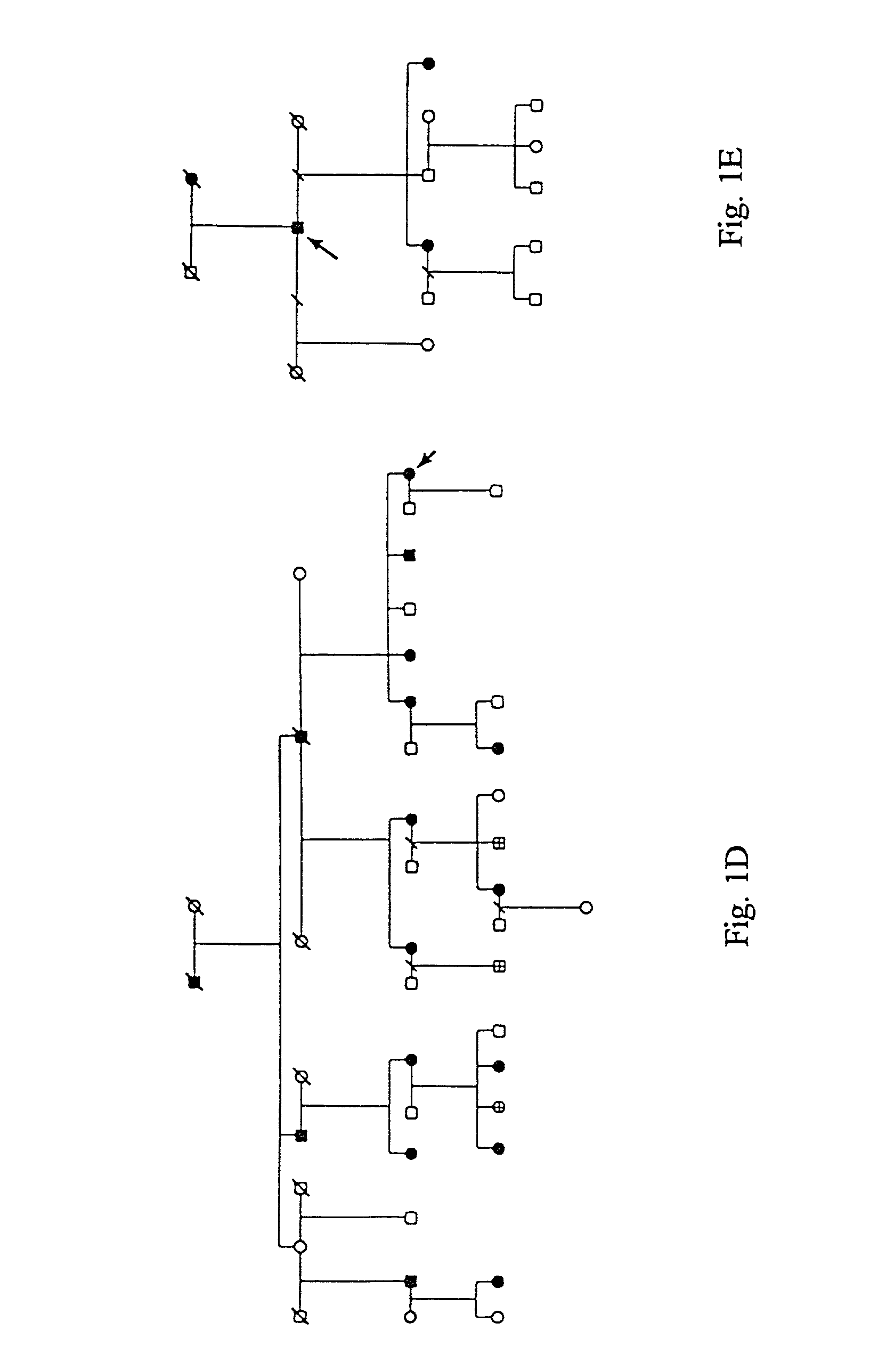Screening and therapy for lymphatic disorders involving the flt4 receptor tyrosine kinase (vegfr-3)
a technology of vegfr-3 and vegfr-3, which is applied in the field of molecular biology and medicine, can solve the problems of little progress in understanding the mechanisms causing lymphedema and worsening swelling, and achieve the effects of improving the structure and function of the lymphatic vasculature, and increasing the production of vegfr-3 ligand polypeptides
- Summary
- Abstract
- Description
- Claims
- Application Information
AI Technical Summary
Benefits of technology
Problems solved by technology
Method used
Image
Examples
example 1
Demonstration that Hereditary Lymphedema is Linked to the VEGHR-3 Locus
[0079] The following experiments, conducted to identify a gene or genes contributing to susceptibility to develop lymphedema, demonstrated that hereditary lymphedema correlates, in at least some families, to the chromosomal locus for the VEGFR-3 gene.
OVERVIEW
[0080] Families with inherited lymphedema were identified for the purpose of conducting a linkage and positional candidate gene analysis. Thirteen distinct families from the United States and Canada were identified through referrals from lymphedema treatment centers, lymphedema support groups, and from internet correspondence (worldwide web site at www.pitt.edu / .about.genetics / lymph / ). The study protocol was approved by the Institutional Review Board of the University of Pittsburgh and participants gave written informed consent. All members of the families were of western European ancestry. Forty members of one family ("Family 101") were examined during a fam...
example 2
Demonstration that a C.fwdarw.T Missense Mutation at Position 3360 in the VEGFR-3 Coding Sequence Results in a Tyrosine Kinase Megative Mutant
[0099] The results set forth in Example 1 identified two missense mutations in the VEGFR-3 coding sequence, one of which (C.fwdarw.T at position 3360) appeared to correlate with heritable lymphedema and one of which (C.fwdarw.T transition at position 1940) did not. The following experiments were conducted to determine the biochemical significance of these mutations on VEGFR-3 biological activity.
[0100] To analyze how the two single amino acid substitutions affect the VEGFR-3 -mediated signaling, the corresponding mutant receptor expression vectors were generated using site-directed mutagenesis procedures and expressed in 293T cells by transient transfection. The long form of human VEGFR-3 cDNA (SEQ ID NO: 1) was cloned as a Hind III-Bam HI fragment from the LTR-FLT41 plasmid [Pajusola et al., Oncogene 8: 2931-2937 (1993)] into pcDNA3. 1I / Z(+) ...
example 3
Treatment of Lymphedema with a VEGFR-3 Ligand
[0110] The data from Examples 1 and 2 collectively indicate a causative role in heritable lymphedema for a mutation in the VEGFR-3 gene that interferes with VEGFR-3 signaling. Such a mutation behaves in an autosomal dominant pattern, due to the apparent necessity for receptor dimerization in the signaling process. However, the data from Example 2 suggests that some residual signaling may still occur in heterozygous affected individuals, presumably through pairing of VEGFR-3 proteins expressed from the wild type allele. The following experiments are designed to demonstrate the efficacy of VEGFR-3 ligand treatment in such affected individuals, to raise VEGFR-3 signaling to levels approaching normal and thereby ameliorate / palliate the symptoms of hereditary lymphedema.
[0111] Initially, an appropriate animal model is selected. Several potential animal models have been described in the literature. [See, e.g., Lyon et al., Mouse News Lett. 71: ...
PUM
| Property | Measurement | Unit |
|---|---|---|
| Fraction | aaaaa | aaaaa |
| Angle | aaaaa | aaaaa |
| Molar density | aaaaa | aaaaa |
Abstract
Description
Claims
Application Information
 Login to View More
Login to View More - R&D
- Intellectual Property
- Life Sciences
- Materials
- Tech Scout
- Unparalleled Data Quality
- Higher Quality Content
- 60% Fewer Hallucinations
Browse by: Latest US Patents, China's latest patents, Technical Efficacy Thesaurus, Application Domain, Technology Topic, Popular Technical Reports.
© 2025 PatSnap. All rights reserved.Legal|Privacy policy|Modern Slavery Act Transparency Statement|Sitemap|About US| Contact US: help@patsnap.com



